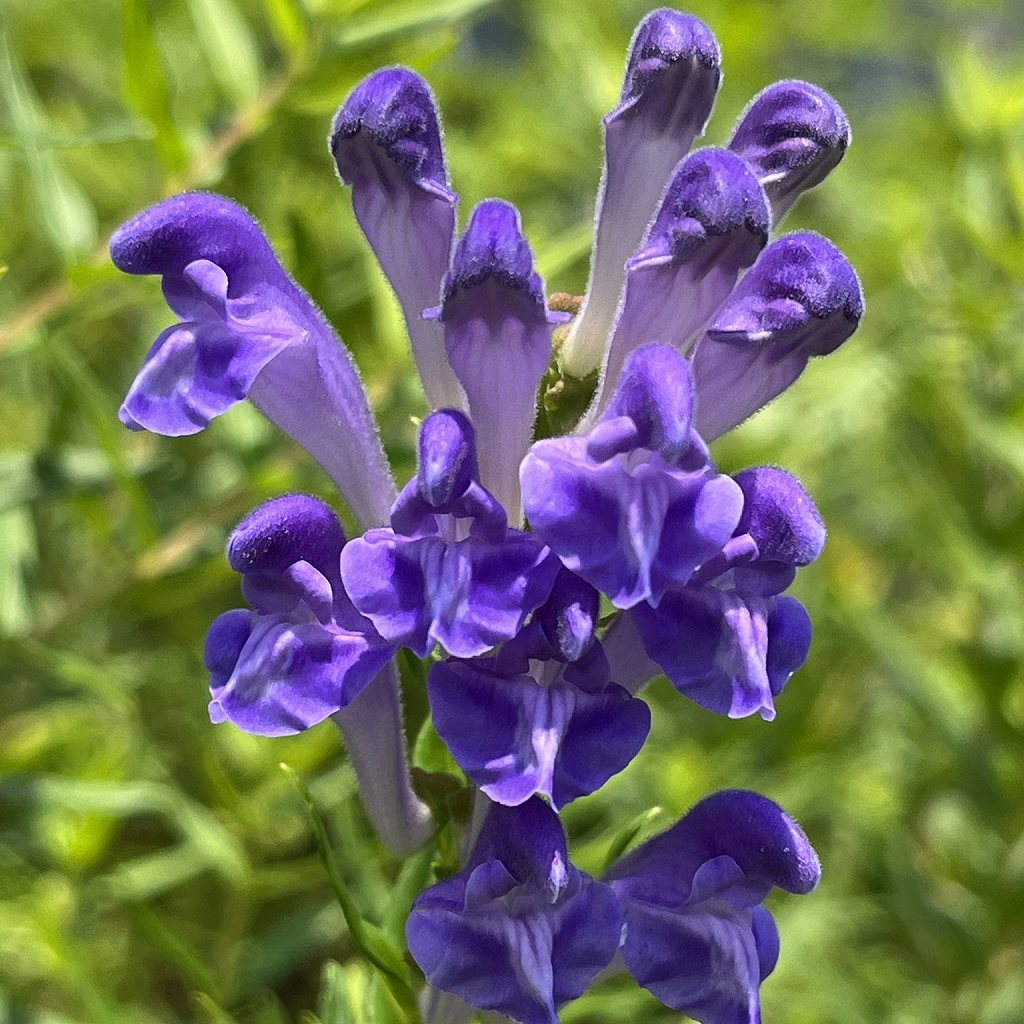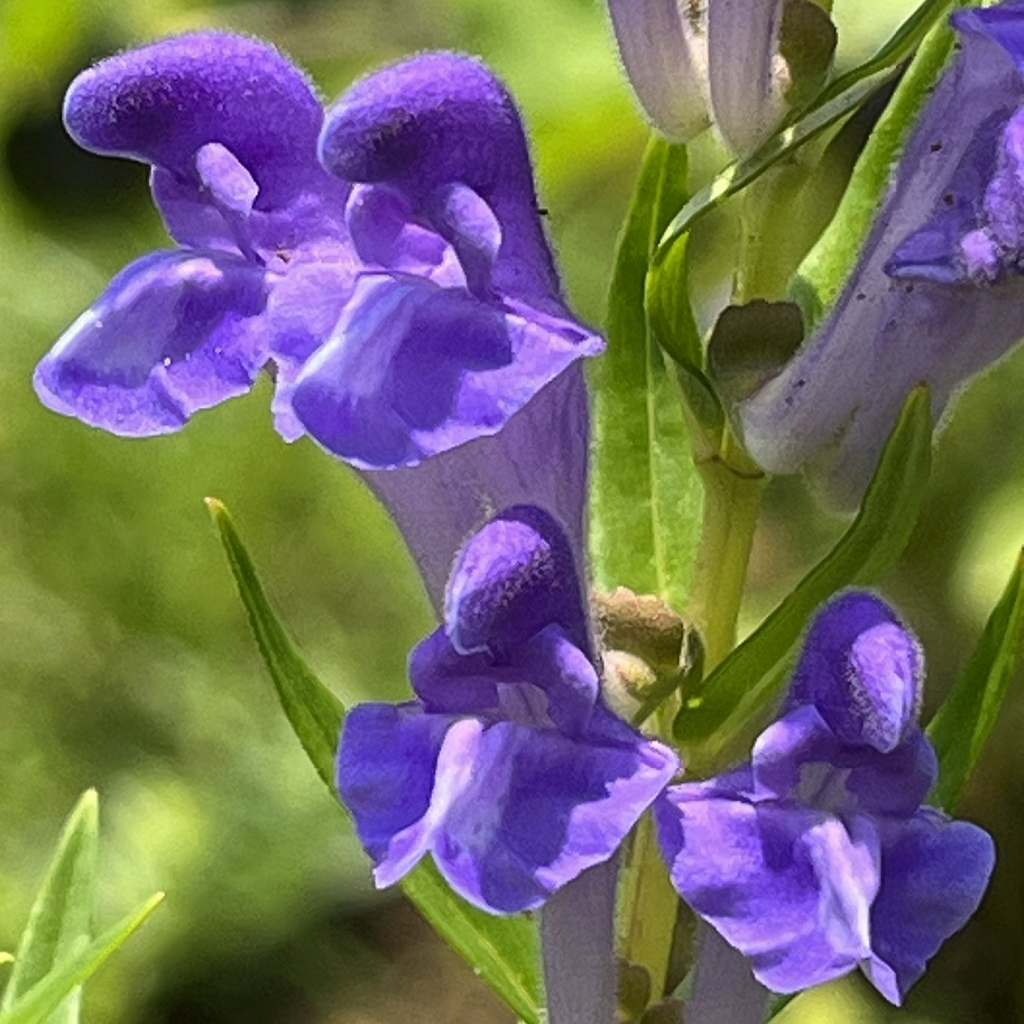コガネバナの和名「黄金花」の由来は根の内部が淡黄色、すなわち黄金色だから。花が青紫色で紛らわしいため、「黄金柳」とも呼ばれます。
Baikal Skullcap’s Japanese name means “golden flower” because the inside of the root is pale yellow. But the flowers are violet, so to avoid confusion with the name, it is also called the “golden willow” because of the shape of the leaves.
【仮名】コガネバナ
【和名】黄金花
【英名】Baikal Skullcap, Chinese Skullcap
【学名】Scutellaria baicalensis
【誕生】06/ 15, 08/ 19
【開花】07, 08, 09, 10月
【花色】Violet



コガネバナ
コガネバナの概要
コガネバナはシソ科タツナミソウ属の多年草です。ロシアのシベリア東部からモンゴル、中国北部、朝鮮半島まで分布し、陽当たりの良いところで自生。日本へは江戸時代、八代将軍の徳川吉宗による生薬の国産化で種子が取り寄せられ、小石川御薬園から各地に栽培が広がりました。
コガネバナの名前
コガネバナの和名「黄金花」の由来は根の内部が淡黄色、すなわち黄金色だから。花が青紫色で紛らわしいため、「黄金柳」とも呼ばれます。ラテン語の属名スクテラリアは花が散って残った萼の形から「小さな皿」、種小名バイカレンシスは原産地の「バイカル地方の」という意味。
コガネバナの姿形
コガネバナの根は外皮が褐色、内部が淡黄色です。茎は4稜で、上部が直立するものの、基部が分岐して叢生。葉は無柄の披針形で対生し、縁に毛が生えます。花は唇形で、上唇が兜状、下唇が3裂。茎先で穂のように集まって咲きます。花後は小さな丸い分果を結び、熟すと黒色に。
コガネバナの利用
コガネバナは根にフラボノイドのバイカリンやオウゴニンなどを含み、生薬名が「黄岑」です。春か秋に根を掘り上げて水で洗い、日干し後、外皮を取り除いて乾燥。「黄連解毒湯」「小柴胡湯」「乙字湯」など、多くの漢方に配合され、解熱、鎮痛、消炎、止血などに用いられます。
Baikal Skullcap
Baikal Skullcap is a perennial plant of the Lamiaceae family. Distributed from eastern Siberia in Russia to Mongolia, northern China, and the Korean Peninsula, it grows naturally in sunny places. During the Edo period, the 8th shogun, Tokugawa Yoshimune, brought the seeds to Japan for the domestic production of herbal medicines, and the cultivation spread from Koishikawa Oyakuen all over Japan.
Baikal Skullcap’s Japanese name means “golden flower” because the inside of the root is pale yellow. But the flowers are violet, so to avoid confusion with the name, it is also called the “golden willow” because of the shape of the leaves. The Latin genus name Scutellaria means “small dish” from the shape of the calyx left after the flowers are scattered, and the specific epithet Baicalensis means “Baikal region” of the place of origin.
Baikal Skullcap roots are brown on the outside and pale yellow on the inside. The stem is 4-ridged, and although the upper part stands upright, the base is branched and crowded. The leaves are sessile, lanceolate and opposite, with hairy edges. The flower is lip-shaped, with a helmet-shaped upper lip and a 3-lobed lower lip. Blooms in clusters at the tip of the stem. After flowering, it bears small round fruits, which turn black when ripe.
Baikal Skullcap is a herbal medicine containing flavonoids such as baicalin and ougonin in its roots. In spring or autumn, the roots are dug up, washed with water, dried in the sun, and the outer bark removed. It is used in many herbal medicines for antipyretic, analgesic, anti-inflammatory, and hemostatic effects.


